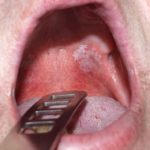
Globally oral cancer represents a major health burden with oral squamous cell carcinoma (OSCC) being the commonest form of malignancy of the oral cavity. The natural history OSCC is not fully understood but a proportion are preceded by oral potentially malignant disorders (OPMD). Despite improvements in treatments mortality rates from oral cancer remain high (~50%) but early detection can improve survival. Surgical biopsy and histology is the current diagnostic standard but other diagnostic tests are available (Vital staining, Oral cytology, Light-based detection and oral spectroscopy, Blood and saliva analysis).
The aim of this Cochrane review update was to estimate the diagnostic accuracy of index tests for the detection of oral cancer and OPMD, in people presenting with clinically evident suspicious and innocuous lesions.
Methods
Searches were conducted in Medline, Embase, the US National Institutes of Health Ongoing Trials Register ClinicalTrials.gov and the World Health Organization International Clinical Trials Registry Platform databases with no restrictions on language or date of publication. Studies reporting on the diagnostic test accuracy of the index tests (vital staining, oral cytology, light-based detection and oral spectroscopy, blood or saliva analysis (biomarker tests) when used as an adjunct to conventional oral examination in detecting OPMD or OSCC were considered. Two reviewers independently selected studies extracted data and assessed quality using the Quality Assessment of Diagnostic Accuracy Studies 2 (QUADAS-2). The results of studies for each index test were combine by meta-analysis and the bivariate approach used to estimate the expected values of sensitivity and specificity.
Results
- 63 studies providing 79 datasets evaluating 7942 lesions were included.
- The studies were published between 1980 and 2020.
- 2 studies were considered as being at low risk of bias across all domains.
- There were no eligible studies evaluating blood or salivary sample analysis
| No. of studies | Sensitivity (95%CI) | Specificity (95%CI) | Certainty of Evidence GRADE | |
| Vital staining | 20 | 0.86 (0.79 to 0.90) | 0.68 (0.58 to 0.77) | Low |
| Oral cytology | 20 | 0.90 (0.82 to 0.94) | 0.94 (0.88 to 0.97) | Moderate |
| Light-based | 23 | 0.87 (0.78 to 0.93) | 0.50 (0.32 to 0.68) | Low |
| Combined tests | 9 | 0.78 (0.45 to 0.94) | 0.71 (0.53 to 0.84) | Very low |
Conclusions
The authors concluded: –
At present none of the adjunctive tests can be recommended as a replacement for the currently used standard of a surgical biopsy and histological assessment. Given the relatively high values of the summary estimates of sensitivity and specificity for oral cytology, this would appear to offer the most potential. Combined adjunctive tests involving cytology warrant further investigation. Potentially eligible studies of blood and salivary biomarkers were excluded from the review as they were of a case-control design and therefore ineligible. In the absence of substantial improvement in the tests evaluated in this updated review, further research into biomarkers may be warranted.
Comments
This Cochrane diagnostic test accuracy review updates the 2015 review by Macey et al (Dental Elf – 1st Jun 2015) including an additional 22 studies. As before none of the adjunctive tests were recommended as a replacement for surgical biopsy and histology. Although the reviewers do highlight that of the tests used oral cytology given its relatively high levels of sensitivity and specificity may have the best potential. This better performance can also be seen in an illustration provided in the review based on UK primary care data. For a sample of 1000 lesions you would expect 25 to be OSCC or OPMD and 975 that did not have OSCC or OPMD. So, the number of true and false negatives and positive that you might expect using the adjunctive is shown in the table.
| True positives | False positives | True negatives | False negatives | |
| Vital staining | 22 | 312 | 663 | 3 |
| Oral cytology | 23 | 58 | 917 | 2 |
| Light-based | 22 | 487 | 488 | 3 |
When considering the findings, it is important to remember that most of the studies were undertaken in secondary care and it is likely that the diagnostic accuracy would be different in primary care. Test accuracy will also vary with the prevalence of OSCC and OPMDs and only two of the included studies were at low risk of bias for all domains. Future studies should report their findings in line with the STARD checklist and ensure that the QUADAS-2 domains are addressed.
Links
Primary Paper
Walsh T, Macey R, Kerr AR, Lingen MW, Ogden GR, Warnakulasuriya S. Diagnostic tests for oral cancer and potentially malignant disorders in patients presenting with clinically evident lesions. Cochrane Database Syst Rev. 2021 Jul 20;7:CD010276. doi: 10.1002/14651858.CD010276.pub3. PMID: 34282854.
Other references
Dental Elf – 25th Nov 2013
Oral examination to detect potentially malignant disorders and mouth cancer
Dental Elf – 26th Nov 2013
Limited evidence to decide whether visual screening reduces the death rate for oral cancer
Dental Elf – 1st Jun 2015
Oral Cancer diagnosis: biopsy and histology still best method
Dental Elf – 16th Oct 2020
Optical fluorescence imaging in oral cancer and potentially malignant disorders
Dental Elf – 11th Nov 2020
Salivary biomarkers CYFRA 21-1 and MMP-9 for oral squamous cell carcinoma diagnosis?
Picture Credits
By Klaus D. Peter, Gummersbach, Germany – Own work, CC BY 3.0 de,
